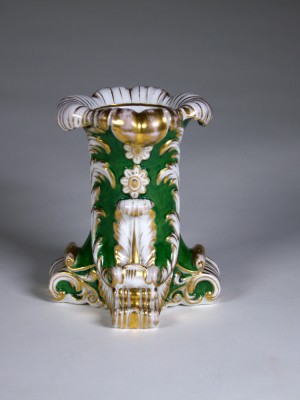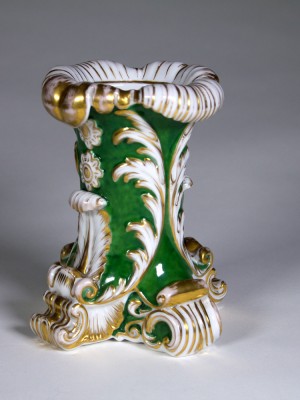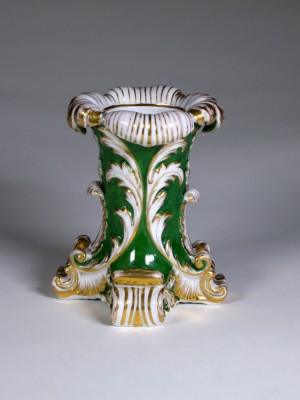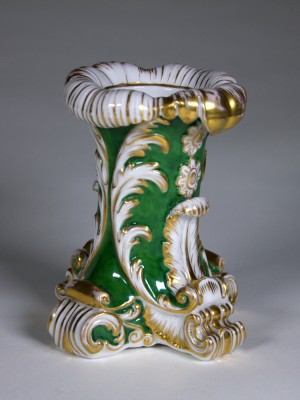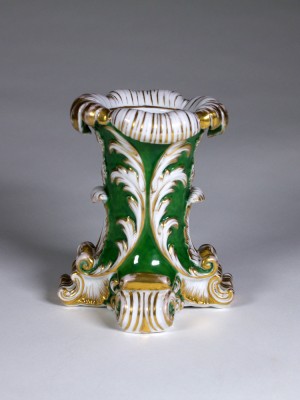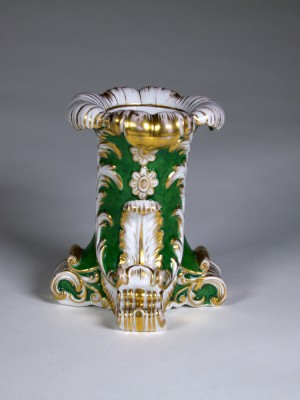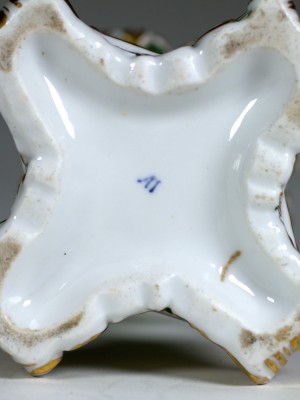This was a lucky find early one morning. This spill vase was misidentified, seriously undervalued and mine for a song as the old saying goes.
Unfamiliar with spills and the vases used to hold them? Spills were lengths of dry kindling used to carry a flame from one place to another. For things like lighting candles. A spill vase holds a little bouquet of sticks instead of flowers. It would be situated close to a source of fire. In a formal setting such as this example would demand, it would likely have been placed somewhere close to the hearth. A mantle piece perhaps.
The mark is for A.G. Popov, a Russian Private Factory of the 19th century. Popov took over a failing factory that had been founded a few years earlier and changed the name some time around 1812. He turned it into one of the most important porcelain factories in Russia. Popov was apparently the first Russian to put together a lab for the production of enamel colours. He was said to be very interested in the technical phases of production. The factory was guided by him from 1812 until his death in the 1850s. It survived through a succession of owners until it closed around 1872. The factory’s best work was from the period Popov himself was in charge.
This mark was used over an extended period when A.G. Popov was director. My guess is about 1830 but could be 20 or so years either way. Need to find other examples of the style.
When I first held this magnificent little vase, I was in awe at how substantial it was for its size. Stands 14 cm in height. The bottom 4 cm of the vase was pressed solid with a 1 cm inset foot. Incredibly thick for porcelain. Side walls are thin and translucent. Weighs in at a hefty 703.25 grams.
This vase was technically difficult to produce. It would have taken great care in the firing. The thick vs. thin extreme. The 3-4 cm thick base. Makes for serious stress at the critical points of firing. Heat or cool this a little too fast and it would have dunted. It would have had major firing cracks. There is a hairline to the bottom interior which may well have happened in the lustre or enamel firing. A minor flaw considering the stresses involved. It was probably fired a total of three times assuming it was glazed ‘green’, otherwise four. A real challenge to produce successfully.
I count at least six separate moulds used in its construction. This was no mass produced object. It would have been very expensive in its day.
This vase was made to last. You were not going to reach for a spill and inadvertently knock this over. The wide heavy base makes this extremely stable. An excellent design.
A.G. Popov’s interests in the technical aspects of production can be seen here. All the moulds needed to make this essentially humble object. The flawless form with the great contrast in thicknesses. In spite of its having been made in many moulds, it shows few signs of how it was assembled. The careful control of heating and cooling in the kiln. The green enamel made in house. You can tell Popov was a man who loved his work.

